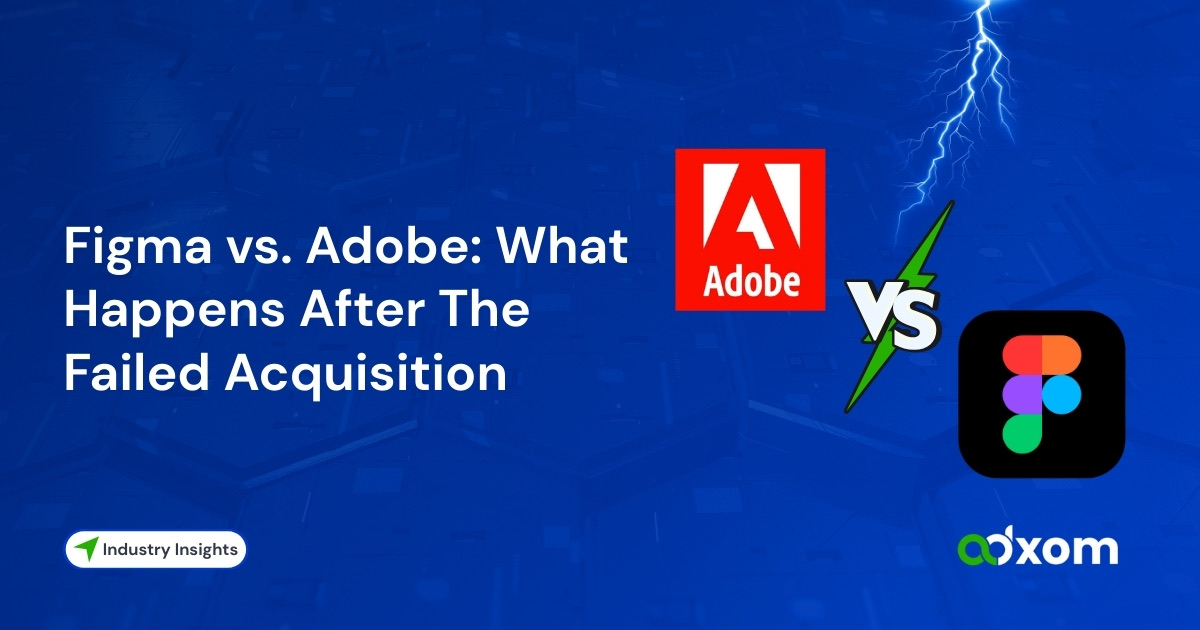Figma vs. Adobe: What Happens After The Failed Acquisition

In an industry dominated by tech giants with near-total control over marketing and design tools, Figma’s rise is a masterclass in how startups can succeed. This article will detail some of the recent history between the two companies, looking at controversy, stock performance and the competitive dynamics at play. It all starts with prohibitive business practices that encourage users to seek alternative products to channel their work into.
Why Public Sentiment Has Shifted Against Adobe
Over the past couple of years Adobe’s reputation among professionals has soured in a major way for a lot of reasons. Experts often cite that moving from product-first to a subscription-first business model was the beginning of the problems for Adobe. In the early years of the internet you could purchase Photoshop outright, but now customers are stuck in the Adobe ecosystem paying for the Creative Cloud every month or every year. This move was clearly seen as prioritising profit margins and shareholders over the end user of the products.
The criticism isn’t just related to pricing however. For example, Adobe faced criticism after changing its Terms of Service in a way that allowed its AI to train on users’ often private work. Adobe also faced criticism when a representative reportedly likened their hidden cancellation fees to ‘heroin for Adobe’. All of these decisions have sowed the seeds in the garden of competition.
What Is Figma and How Did It Start?
The initial goal with Figma was to create a suite of design tools that can be used in a browser eliminating the friction of software downloads. The platform evolved over time to also include collaborative features which allow teams to work on projects together in real time. Since its public launch in 2016, Figma has become a formidable player in the design software space. While it didn’t start as a competitor to Adobe, its interface, collaboration and better pricing have made it so. It is also why Adobe tried to acquire them in September 2022.
What is interesting about this developing news story is that Figma also has a subscription service in a similar way to Adobe Creative Cloud. However, unlike the Cloud, Figma has a free version, not a trial, which can use a lot of the features of the paid one. This made it a great tool for freelancers, startups, and educational users, fostering a positive user base and goodwill.
The Attempted Acquisition of Figma by Adobe
During September 2022, it was announced that Adobe had put together a $20 billion dollar bid for Figma. Regulators saw what Adobe was trying to do and tried everything in their power to stop it from happening. This would have created a monopoly for Adobe and significantly reduced competition, leaving Canva as the only other popular option.
By December 2023, regulatory pushback forced Adobe to abandon the acquisition. This outcome preserved Figma’s independence and allowed it to maintain its innovative culture. Based on what we saw with Adobe’s own products, Figma’s products and services would’ve likely been influenced by what would have been their parent company.
Figma’s Future After the IPO
Figma went public on 31 July 2025, with a valuation of $56.3 billion, which is nearly three times the amount Adobe tried to spend to acquire it. Part of this valuation reflects its status as a competitor in a market long dominated by Adobe. However, with public attention comes a new set of challenges.
Looking ahead, Figma faces a challenge that will be the most important in the beginning of its future as a publicly traded company. Although the IPO was successful, Adobe remains the standard for most organizations, presenting Figma with the challenge of convincing businesses to adopt its tools. Transitioning organisations and businesses to new tools is a complex process that takes time, especially considering that Adobe has had an iron grip on creative tools for years.
What This Means For Businesses Around The World
The impact of Figma going public has been minimal, because companies won’t abandon Adobe overnight. However Figma’s growth presents competition for a market that has long since given up. This could pressure Adobe to adjust its strategies and policies to remain competitive with Figma.
Competition between companies often benefits users, who can enjoy better pricing and innovation. Whether Adobe adapts or continues its current practices, Figma has shown that you can challenge the giants and shift an industry, if you have the right idea.
